蜂窝式催化剂介绍ppt
- 格式:ppt
- 大小:6.40 MB
- 文档页数:30
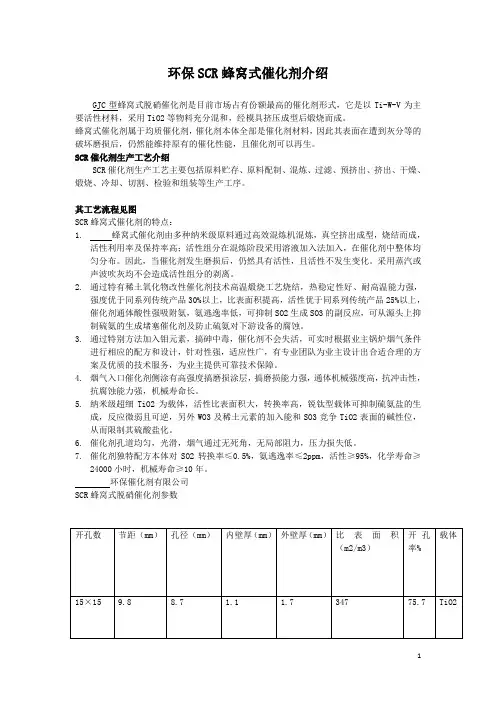
环保SCR蜂窝式催化剂介绍GJC型蜂窝式脱硝催化剂是目前市场占有份额最高的催化剂形式,它是以Ti-W-V为主要活性材料,采用TiO2等物料充分混和,经模具挤压成型后煅烧而成。
蜂窝式催化剂属于均质催化剂,催化剂本体全部是催化剂材料,因此其表面在遭到灰分等的破坏磨损后,仍然能维持原有的催化性能,且催化剂可以再生。
SCR催化剂生产工艺介绍SCR催化剂生产工艺主要包括原料贮存、原料配制、混炼、过滤、预挤出、挤出、干燥、煅烧、冷却、切割、检验和组装等生产工序。
其工艺流程见图SCR蜂窝式催化剂的特点:1.蜂窝式催化剂由多种纳米级原料通过高效混炼机混炼,真空挤出成型,烧结而成,活性利用率及保持率高;活性组分在混炼阶段采用溶液加入法加入,在催化剂中整体均匀分布。
因此,当催化剂发生磨损后,仍然具有活性,且活性不发生变化。
采用蒸汽或声波吹灰均不会造成活性组分的剥离。
2.通过特有稀土氧化物改性催化剂技术高温煅烧工艺烧结,热稳定性好、耐高温能力强,强度优于同系列传统产品30%以上,比表面积提高,活性优于同系列传统产品25%以上,催化剂通体酸性强吸附氨,氨逃逸率低,可抑制SO2生成SO3的副反应,可从源头上抑制硫氨的生成堵塞催化剂及防止硫氨对下游设备的腐蚀。
3.通过特别方法加入钼元素,搞砷中毒,催化剂不会失活,可实时根据业主锅炉烟气条件进行相应的配方和设计,针对性强,适应性广,有专业团队为业主设计出合适合理的方案及优质的技术服务,为业主提供可靠技术保障。
4.烟气入口催化剂侧涂有高强度搞磨损涂层,搞磨损能力强,通体机械强度高,抗冲击性,抗腐蚀能力强,机械寿命长。
5.纳米级超细TiO2为载体,活性比表面积大,转换率高,锐钛型载体可抑制硫氨盐的生成,反应微弱且可逆,另外WO3及稀土元素的加入能和SO3竞争TiO2表面的碱性位,从而限制其硫酸盐化。
6.催化剂孔道均匀,光滑,烟气通过无死角,无局部阻力,压力损失低。
7.催化剂独特配方本体对SO2转换率≤0.5%,氨逃逸率≤2ppm,活性≥95%,化学寿命≥24000小时,机械寿命≥10年。
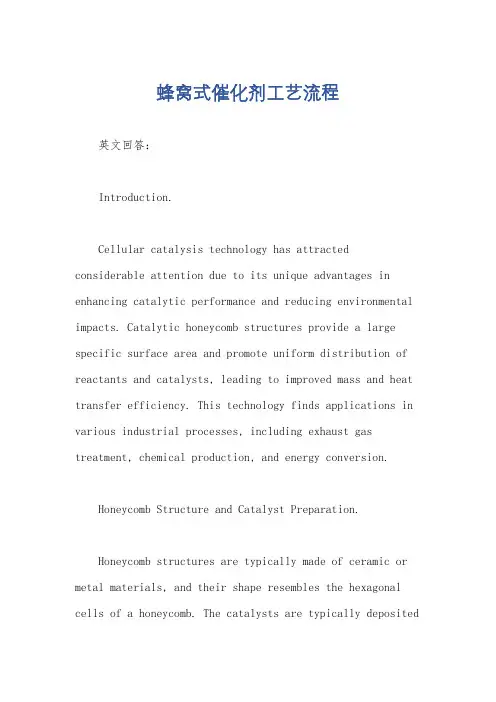
蜂窝式催化剂工艺流程英文回答:Introduction.Cellular catalysis technology has attracted considerable attention due to its unique advantages in enhancing catalytic performance and reducing environmental impacts. Catalytic honeycomb structures provide a large specific surface area and promote uniform distribution of reactants and catalysts, leading to improved mass and heat transfer efficiency. This technology finds applications in various industrial processes, including exhaust gas treatment, chemical production, and energy conversion.Honeycomb Structure and Catalyst Preparation.Honeycomb structures are typically made of ceramic or metal materials, and their shape resembles the hexagonal cells of a honeycomb. The catalysts are typically depositedonto the honeycomb surface using various methods, such as impregnation, washcoating, or chemical vapor deposition. The size, shape, and composition of the catalyst particles can be tailored to optimize catalytic activity and selectivity.Process Flow.The process flow for cellular catalysis typically involves the following steps:1. Preheating: Reactants are preheated before entering the honeycomb catalyst to achieve the appropriate reaction temperature.2. Catalytic Reaction: The reactants pass through the honeycomb catalyst, where they interact with the active sites on the surface. The catalyst promotes the desired chemical reactions, converting reactants into products.3. Mass and Heat Transfer: The honeycomb structure facilitates efficient mass and heat transfer, ensuringuniform distribution of reactants and catalysts throughout the reactor.4. Product Separation: After the catalytic reaction, the products are separated from the unreacted reactants and catalyst using various methods, such as filtration or distillation.5. Regeneration: In some cases, the catalyst may become deactivated over time due to poisoning or fouling. Regeneration techniques are used to restore the catalyst's activity and maintain its performance.Applications.Cellular catalysis technology has found wide applications in various industries, including:Automotive Exhaust Treatment: Honeycomb catalysts are used in automotive exhaust systems to convert harmful pollutants, such as carbon monoxide, hydrocarbons, and nitrogen oxides, into less harmful substances.Chemical Production: Honeycomb catalysts are employedin various chemical processes, including the production of ammonia, nitric acid, and petrochemicals. They enhance reaction rates and selectivities, resulting in improved product yields and reduced energy consumption.Energy Conversion: Honeycomb catalysts play a crucial role in energy conversion technologies, such as fuel cells and solid oxide fuel cells. They facilitate efficient electrochemical reactions and improve the overall performance of these systems.Advantages.The advantages of cellular catalysis technology include:Enhanced Catalytic Performance: The honeycombstructure provides a large specific surface area and promotes uniform distribution of reactants and catalysts, leading to improved catalytic efficiency.Reduced Pressure Drop: The honeycomb design minimizes pressure drop across the reactor, reducing energy consumption.Compact Design: Honeycomb catalysts can be designed in compact sizes, enabling space-saving and integration into existing systems.Environmental Benefits: Cellular catalysis technology helps reduce environmental pollution by converting harmful substances into less harmful products.Conclusion.Cellular catalysis technology offers significant advantages in enhancing catalytic performance and reducing environmental impacts. The honeycomb structure provides a large specific surface area, facilitates efficient mass and heat transfer, and minimizes pressure drop. This technology finds applications in various industries, including automotive exhaust treatment, chemical production, and energy conversion.中文回答:蜂窝催化剂工艺流程。
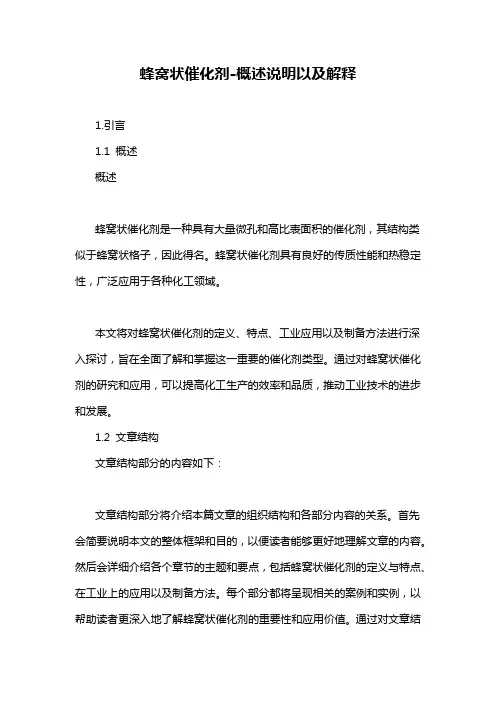
蜂窝状催化剂-概述说明以及解释1.引言1.1 概述概述蜂窝状催化剂是一种具有大量微孔和高比表面积的催化剂,其结构类似于蜂窝状格子,因此得名。
蜂窝状催化剂具有良好的传质性能和热稳定性,广泛应用于各种化工领域。
本文将对蜂窝状催化剂的定义、特点、工业应用以及制备方法进行深入探讨,旨在全面了解和掌握这一重要的催化剂类型。
通过对蜂窝状催化剂的研究和应用,可以提高化工生产的效率和品质,推动工业技术的进步和发展。
1.2 文章结构文章结构部分的内容如下:文章结构部分将介绍本篇文章的组织结构和各部分内容的关系。
首先会简要说明本文的整体框架和目的,以便读者能够更好地理解文章的内容。
然后会详细介绍各个章节的主题和要点,包括蜂窝状催化剂的定义与特点、在工业上的应用以及制备方法。
每个部分都将呈现相关的案例和实例,以帮助读者更深入地了解蜂窝状催化剂的重要性和应用价值。
通过对文章结构的介绍,读者将能够更好地理解整篇文章的内容和主旨,以便更好地获取知识和启发。
1.3 目的本文旨在探讨蜂窝状催化剂在工业领域的重要性和应用价值。
通过深入分析蜂窝状催化剂的定义、特点以及制备方法,以及其在工业上的广泛应用,希望能够为读者提供对这一催化剂类型的全面了解。
同时,通过对未来展望的讨论,指出蜂窝状催化剂在环境保护、能源利用等方面的潜在发展方向,为相关领域的研究和应用提供新的思路和启发。
希望本文能够为读者对蜂窝状催化剂有更深入的认识,并促进相关领域的进一步研究和发展。
2.正文2.1 蜂窝状催化剂的定义与特点蜂窝状催化剂是一种具有高表面积和良好传热性能的催化剂。
其外形呈蜂窝状结构,内部空隙为多孔结构,使其具有较大的活性表面积。
蜂窝状催化剂通常由活性物质(如金属氧化物或贵金属)负载在高表面积的载体上而成。
蜂窝状催化剂的特点包括:1. 高活性:由于其高表面积和多孔结构,蜂窝状催化剂具有较高的催化活性和选择性。
2. 耐高温性:蜂窝状催化剂通常使用耐高温的载体材料制成,能够在高温下稳定工作。
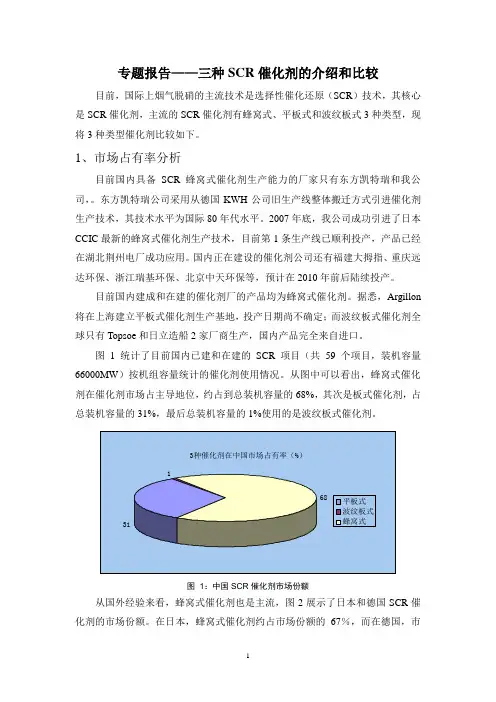
专题报告——三种SCR催化剂的介绍和比较目前,国际上烟气脱硝的主流技术是选择性催化还原(SCR)技术,其核心是SCR催化剂,主流的SCR催化剂有蜂窝式、平板式和波纹板式3种类型,现将3种类型催化剂比较如下。
1、市场占有率分析目前国内具备SCR蜂窝式催化剂生产能力的厂家只有东方凯特瑞和我公司,。
东方凯特瑞公司采用从德国KWH公司旧生产线整体搬迁方式引进催化剂生产技术,其技术水平为国际80年代水平。
2007年底,我公司成功引进了日本CCIC最新的蜂窝式催化剂生产技术,目前第1条生产线已顺利投产,产品已经在湖北荆州电厂成功应用。
国内正在建设的催化剂公司还有福建大拇指、重庆远达环保、浙江瑞基环保、北京中天环保等,预计在2010年前后陆续投产。
目前国内建成和在建的催化剂厂的产品均为蜂窝式催化剂。
据悉,Argillon 将在上海建立平板式催化剂生产基地,投产日期尚不确定;而波纹板式催化剂全球只有Topsoe和日立造船2家厂商生产,国内产品完全来自进口。
图1统计了目前国内已建和在建的SCR项目(共59个项目,装机容量66000MW)按机组容量统计的催化剂使用情况。
从图中可以看出,蜂窝式催化剂在催化剂市场占主导地位,约占到总装机容量的68%,其次是板式催化剂,占总装机容量的31%,最后总装机容量的1%使用的是波纹板式催化剂。
图1:中国SCR催化剂市场份额从国外经验来看,蜂窝式催化剂也是主流,图2展示了日本和德国SCR催化剂的市场份额。
在日本,蜂窝式催化剂约占市场份额的67%,而在德国,市场份额的77%(65%+12%)为蜂窝式催化剂。
图2:日本和德国催化剂市场份额(截至2005年8月)2、生产过程技术介绍图3比较了蜂窝式和平板式催化剂的生产制造过程。
首先是含有V2O5、TiO2和WO3(MoO3)等活性组分的原材料在混炼机中进行充分混炼,混炼均匀的泥料通过挤出机进行整体挤出成型后得到蜂窝式催化剂,通过轮压的方法涂覆到不锈钢网上后得到平板式催化剂。
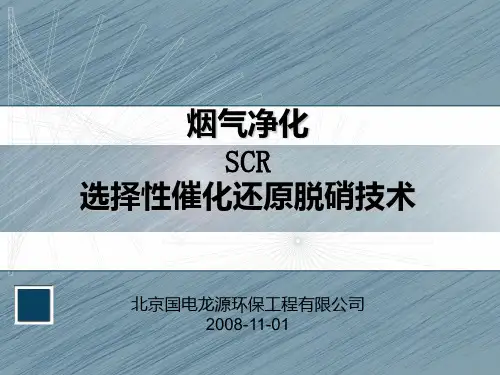
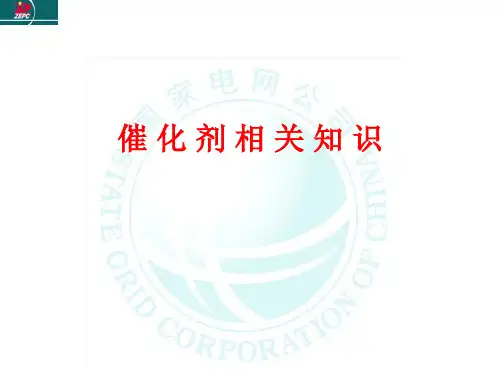
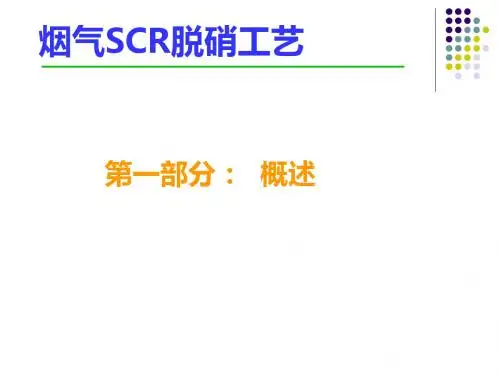

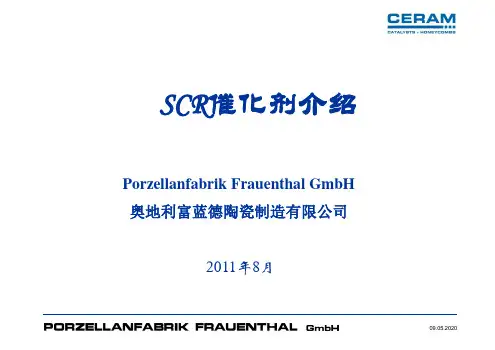


蜂窝陶瓷催化剂载体解释说明以及概述1. 引言1.1 概述蜂窝陶瓷催化剂载体是一种广泛应用于工业领域的关键材料,具有重要的催化作用。
在各类化学反应中,催化剂扮演着至关重要的角色,能够促进反应速率、提高产物纯度,并降低能源消耗。
而蜂窝陶瓷作为一种特殊的多孔结构材料,具备高比表面积和优良的传质性能,在催化剂领域中得到了广泛应用。
1.2 文章结构本文主要围绕着蜂窝陶瓷催化剂载体展开讨论,共分为四个部分。
引言部分对蜂窝陶瓷催化剂载体进行概述,并介绍文章的结构安排。
第二部分将解释清楚蜂窝陶瓷催化剂载体的定义和特点,并探讨其在工业中的广泛应用。
第三部分将对蜂窝陶瓷催化剂载体进行概述,包括其生产制备过程与技术发展历程以及主要类型和特性介绍。
最后一部分将给出结论,总结蜂窝陶瓷催化剂载体的重要性和应用价值,并对未来发展方向进行探讨和建议。
1.3 目的本文旨在全面介绍蜂窝陶瓷催化剂载体的定义、特点、优势和应用。
通过阐述蜂窝陶瓷催化剂载体的概念和原理,以及它在工业中的广泛应用,读者将能够深入了解并认识到这一材料在催化领域的重要性。
此外,本文还将总结现有研究成果并对未来的发展方向提出展望和建议,为相关领域的研究人员提供参考和借鉴。
2. 蜂窝陶瓷催化剂载体解释说明:2.1 什么是蜂窝陶瓷催化剂载体蜂窝陶瓷催化剂载体是一种用于固定和支持催化剂的材料,它具有类似于蜂巢结构的孔隙网络。
这种结构使其具备较大的表面积,并提供了良好的质量传递特性和高度的稳定性。
蜂窝陶瓷催化剂载体通常由氧化铝、氧化硅等高温耐火材料制成,具有优异的物理、化学性质,广泛应用于工业领域。
2.2 蜂窝陶瓷催化剂载体的特点和优势蜂窝陶瓷催化剂载体具有以下特点和优势:a) 高比表面积:由于其独特的孔隙结构,蜂窝陶瓷催化剂载体拥有较大的比表面积,有效提高了反应物与催化剂之间的接触面积,增强了催化反应效率。
b) 优异的质量传递特性:蜂窝陶瓷催化剂载体的孔隙网络可促进反应物在内部的传质过程,提高反应速率和效果。
火力发电蜂窝催化剂板式催化剂下载提示:该文档是本店铺精心编制而成的,希望大家下载后,能够帮助大家解决实际问题。
文档下载后可定制修改,请根据实际需要进行调整和使用,谢谢!本店铺为大家提供各种类型的实用资料,如教育随笔、日记赏析、句子摘抄、古诗大全、经典美文、话题作文、工作总结、词语解析、文案摘录、其他资料等等,想了解不同资料格式和写法,敬请关注!Download tips: This document is carefully compiled by this editor. I hope that after you download it, it can help you solve practical problems. The document can be customized and modified after downloading, please adjust and use it according to actual needs, thank you! In addition, this shop provides you with various types of practical materials, such as educational essays, diary appreciation, sentence excerpts, ancient poems, classic articles, topic composition, work summary, word parsing, copy excerpts, other materials and so on, want to know different data formats and writing methods, please pay attention!火力发电中的催化剂应用研究引言在能源领域,火力发电一直是重要的发电方式之一。
蜂窝式催化剂工艺流程催化剂是一种可以促进化学反应的物质,在化工生产中有着广泛的应用。
蜂窝式催化剂是一种常见的催化剂类型,其结构特点是具有大量的小孔结构,能够提高催化反应的表面积和活性。
蜂窝式催化剂工艺流程是指在工业生产中,将原料通过特定的工艺步骤转化为蜂窝式催化剂的过程。
下面将介绍蜂窝式催化剂的制备工艺流程。
原料准备蜂窝式催化剂的制备需要选用高质量的原料。
通常所用的原料有活性炭、金属氧化物、稀土氧化物等。
这些原料需要经过粉碎、混合等工艺步骤,以确保原料的均匀性和纯度。
同时,根据催化剂的具体要求,可能需要添加其他的助剂或添加剂,以提高催化剂的性能。
浸渍浸渍是制备蜂窝式催化剂的关键步骤之一。
在浸渍过程中,将粉末状的原料浸没在溶液中,使得原料能够充分吸收溶液中的活性成分。
溶液中的活性成分可以是金属离子、稀土氧化物等。
浸渍完成后,将浸渍后的原料进行干燥,去除多余的溶液,形成干燥的颗粒状原料。
成型成型是制备蜂窝式催化剂的另一个重要步骤,通过成型工艺,将干燥的颗粒状原料制成蜂窝状的形状。
成型方法通常采用压制、挤压等工艺。
在成型过程中,需要控制成型压力和速度,以确保蜂窝式催化剂的外形和尺寸符合要求。
焙烧成型后的蜂窝式催化剂需要进行焙烧,以使得催化剂具有一定的力学强度和化学活性。
焙烧过程中,首先需要进行预热,然后逐渐升温到目标温度,并在一定的温度下保持一定的时间。
焙烧的温度、时间和气氛需要根据催化剂的具体要求进行精确控制。
通过焙烧,可以使得催化剂中的活性成分得以固定,形成具有一定孔径和结构的蜂窝式催化剂。
活化焙烧后的蜂窝式催化剂需要进行活化工艺,以增加其化学活性。
活化通常是指在一定温度下将催化剂暴露在气体或液体的活性成分中,以使得催化剂中的活性位点得到活化。
活化的方法包括还原、硫化等。
活化过程中需要严格控制温度、压力和活化剂的浓度,以确保催化剂的活性位点得到充分活化。
包覆有些蜂窝式催化剂需要进行包覆工艺,以提高催化剂的稳定性和抗毒化能力。